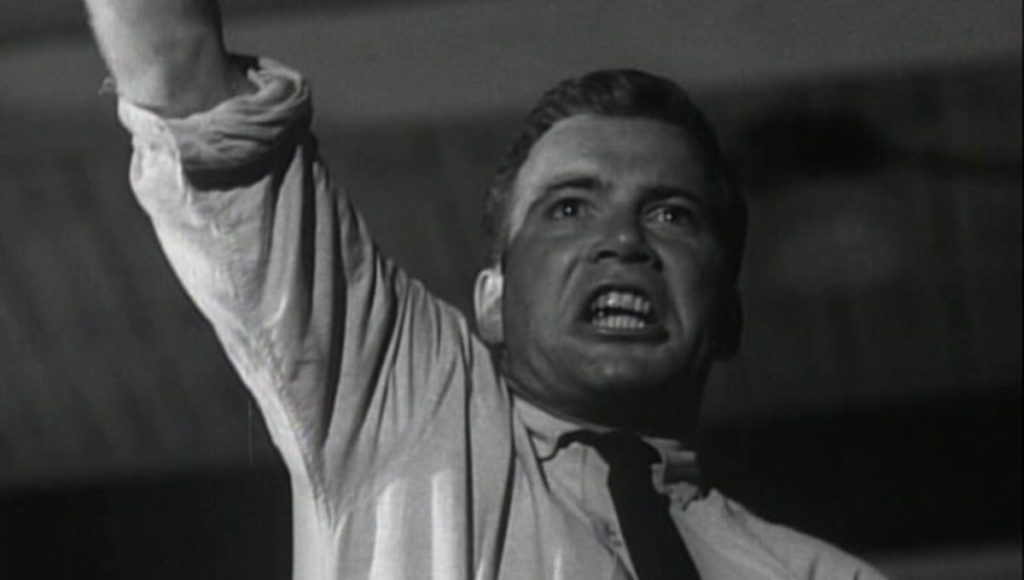
Charles Beaumont made a career of writing macabre stories whose slight removal from the reality we know and share gave them a urgency and horror that would influence a generation. In popular culture he is most renowned for his work writing for The Twilight Zone. Though his career spanned just less than twenty years Beaumont’s work provides today’s audiences and readers with a unique glimpse at the psychology of America at the height of its social and political upheaval. In adapting his novel The Intruder for the screen as a project for producer/director Roger Corman in 1962, Beaumont has given us what may be the best account of the racial violence in the deep south of the time.
The film follows Adam Cramer (William Shatner), who arrives in a small town called Caxton. Cramer is charming, intelligent, and does not appear at all threatening at the outset of the film. But when it becomes clear that he has come to Caxton with the intention of halting the court-ordered integration of the local high school, a darker, hateful side of his character comes to light. The ominous quality of Taylor Byars’ photography of Shatner clearly signifies that the audiences’ sympathies should not be with the pro-segregation characters. This is reinforced by Corman’s choice of casting locals, and presenting African-American characters first within the context of a functioning family unit (a rarity at the time). Later this will serve to dramatize the ramifications of Cramer’s allegations of interracial rape; a sequence whose macabre design, complete with Klansmen, foreshadows Corman’s Masque Of The Red Death (1964).
In the same tradition as Sam Fuller’s The Naked Kiss (1964) and Shock Corridor (1963), The Intruder packages its edgey social commentary in the vernacular of the B-Movie. But it is Corman’s film that truly confronts the controversial issue of its day head-on. What the B-Movies of the early sixties didn’t have to worry about, at least not to as great an extent, was the press. Films such as Martin Ritt’s Edge Of The City (1957) and Stanley Kramer’s The Defiant Ones (1958) cost nearly three times as much as The Intruder and featured big-name stars like Sydney Poitier and Tony Curtis (William Shatner would not be a household name for four more years when he is cast as Captain James T. Kirk on Star Trek). The mainstream could not afford to isolate its audiences with either the truth of racial violence or the bluntness of their liberal message. What filmmakers like Ritt and Kramer could do was to suggest the injustice of laws such as segregation and allude to racial violence in their films. The minute Corman shows us Cramer driving into the “black neighborhood” of Caxton with Klansmen in the back seat he has immediately surpassed these other films in terms of the directness of his political and social agenda.
Though The Intruder can be seen today as a remarkable film for its time; when it was originally completed Corman had to struggle to find it distribution. Even then audiences were not receptive to the films shocking portrayal of racism despite the fact that The Intruder was getting predominantly favorable reviews. It’s been due to William Shatner’s and Roger Corman’s ever evolving cult statuses that The Intruder has remained in print and available for viewing in the years since. Though it has been confusing at times since I have seen home video releases of the film under the three different names the film was originally marketed as, both nationally and internationally, including the comical title I Hate Your Guts!. But that just goes to show that it is the film’s makers who are the selling point not the film. Hopefully, that will change.
